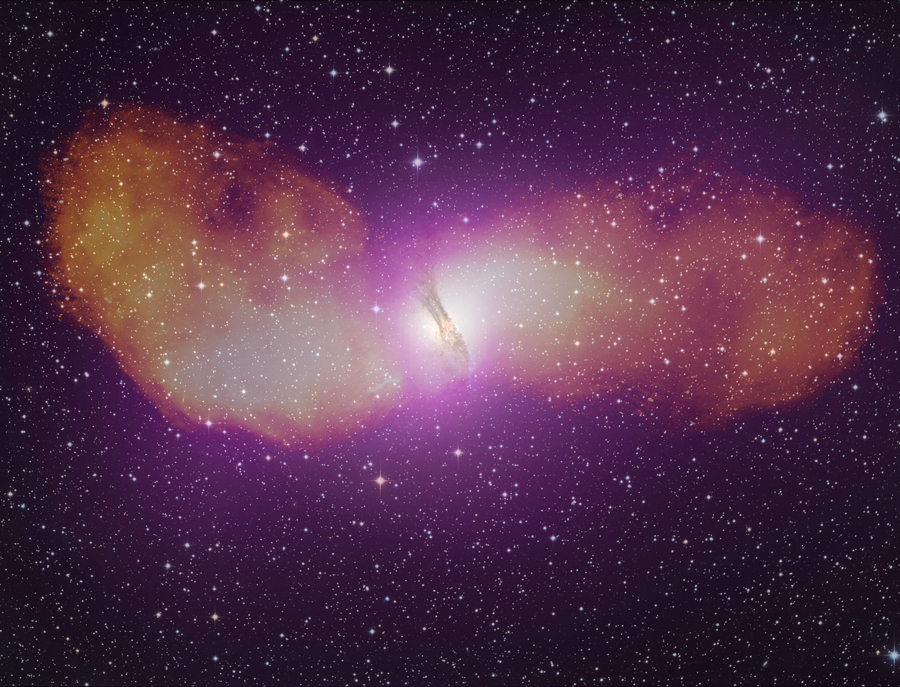
 Credit: NASA/DOE/Fermi LAT Collaboration, Capella Observatory, and Ilana Feain, Tim Cornwell, and Ron Ekers (CSIRO/ATNF), R. Morganti (ASTRON), and N. Junkes (MPIfR)
Credit: NASA/DOE/Fermi LAT Collaboration, Capella Observatory, and Ilana Feain, Tim Cornwell, and Ron Ekers (CSIRO/ATNF), R. Morganti (ASTRON), and N. Junkes (MPIfR)
Boosting the Background
Centaurus A is a mysterious galaxy located about 12 million light-years from Earth. Though it's an elliptical galaxy, a type of galaxy usually devoid of gas and dust, Cen A shows strangely prominent black lanes of dust through its middle. Infrared emission from the dusty regions observed by the Spitzer Space Telescope shows the presence of a small spiral galaxy apparently swallowed by Cen A. Centaurus A is a notoriously bright radio galaxy, one of the first radio-emitting objects to be associated with a galaxy beyond the Milky Way. The radio emission comes from two high-powered jets produced by a supermassive black hole at the center of the galaxy. This black hole is busily accreting gas and dust in its vicinity, but some of this infalling matter is accelerated to enormous speeds and somehow escapes the black hole's grasp. Cen A is a known gamma-ray source as well, but the origin of the gamma-ray emission has been a long-standing mystery. A mystery now solved by new observations with the Fermi Gamma-Ray Space Telescope. The image above shows a composite radio (in orange), optical (in white) and gamma-ray (purple) image of Cen A. Fermi's fine gamma-ray spatial resolution for the first time clearly associates the gamma-ray emission with the radio jets. Fast-moving particles in the jet collide with low-energy photons left behind by the Big Bang, and boost the energy of these photons by a trillion times, from the microwave to gamma-ray regime. Though this effect was predicted by astronomers, the Fermi observation of Cen A is the first clear evidence that it actually occurs.
Published: April 5, 2010
<
HEA Dictionary ● Archive
● Search HEAPOW
● Other Languages
● HEAPOW on Facebook
● Download all Images
● Education ● HEAD
>

Each week the HEASARC
brings you new, exciting and beautiful images from X-ray and Gamma ray
astronomy. Check back each week and be sure to check out the HEAPOW archive!
Page Author: Dr. Michael F. Corcoran
Last modified Monday, 26-Feb-2024 17:10:08 EST


